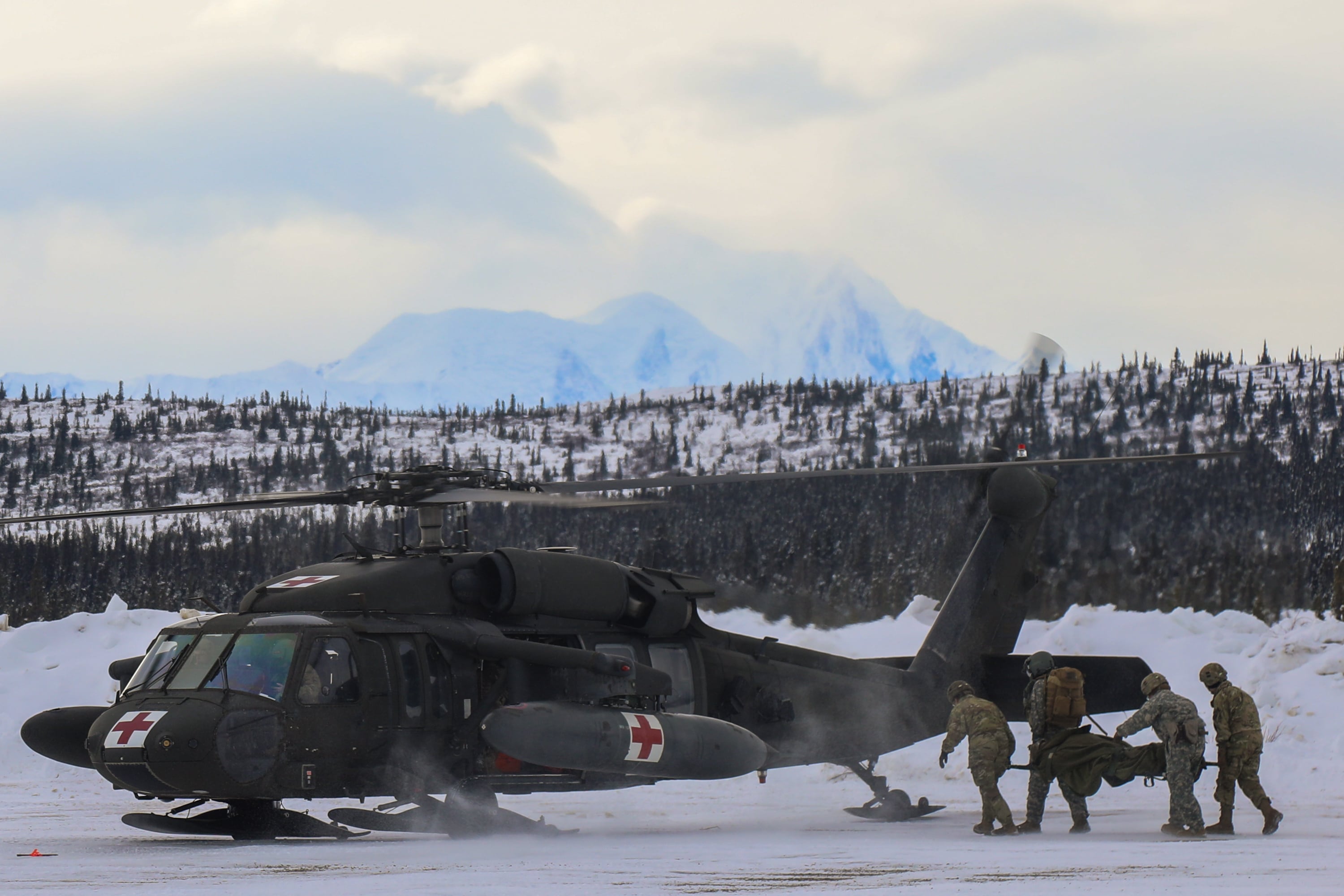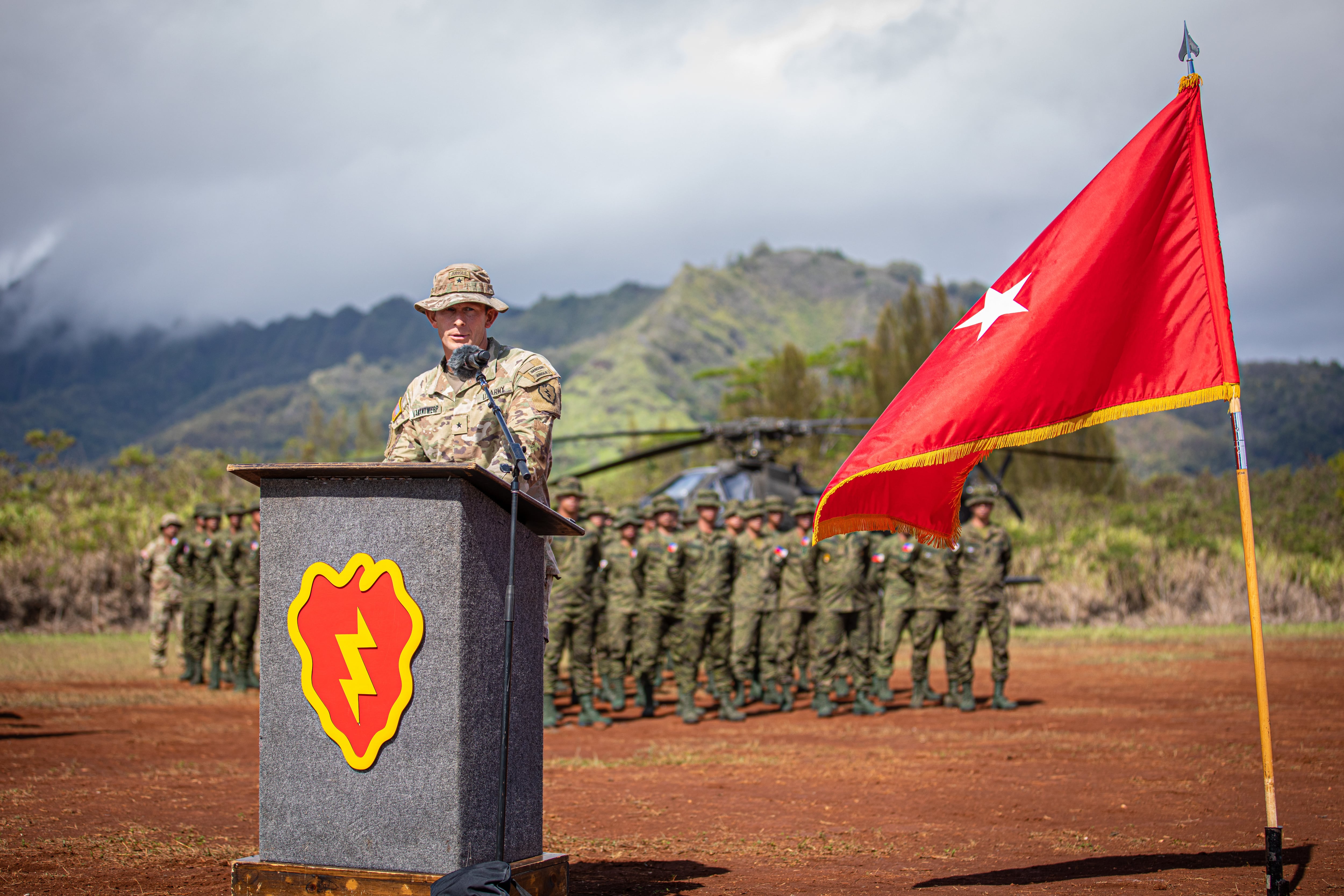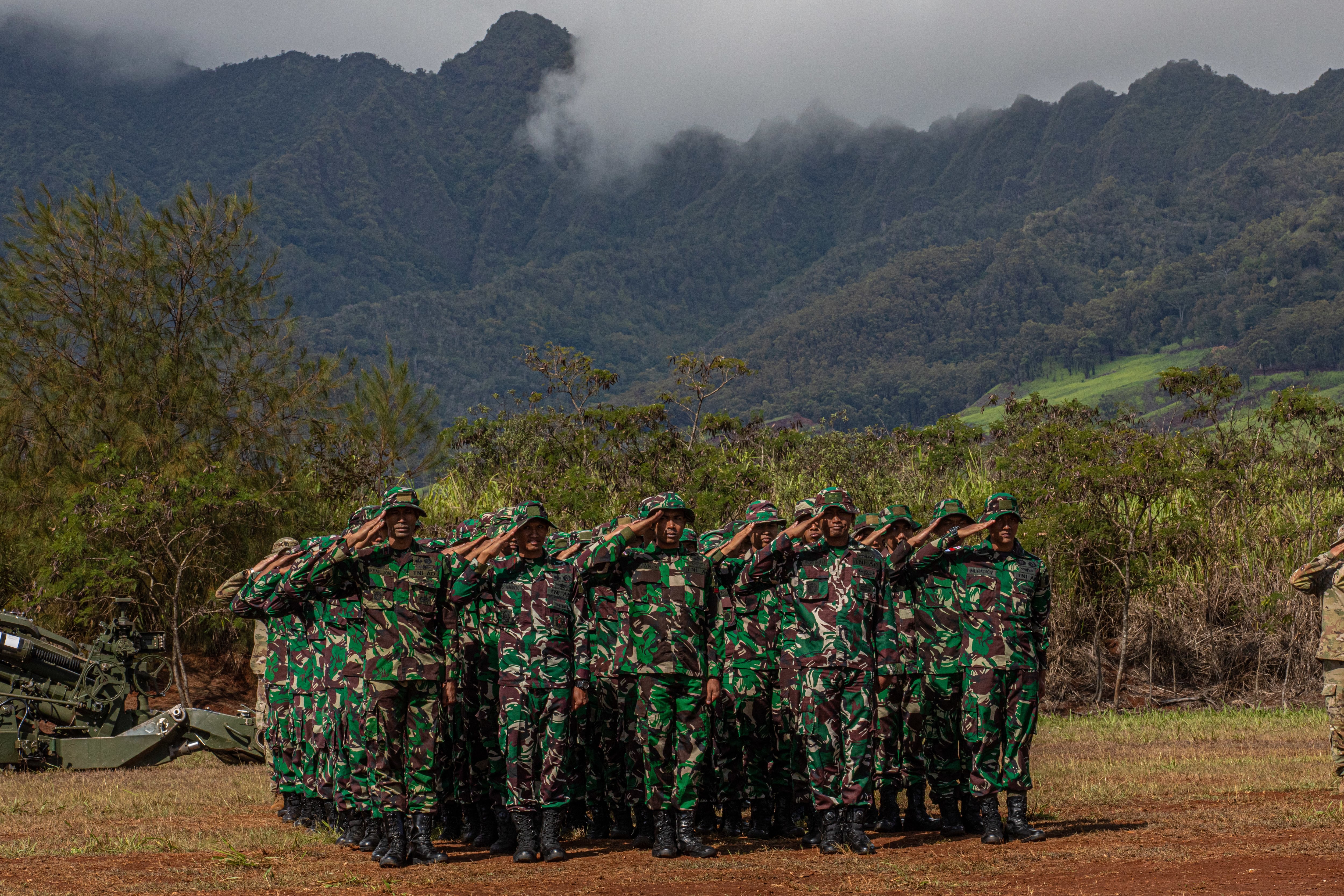Correction: This article was updated at 1:40 p.m. Oct. 28, 2022, to note that this is not the first brigade rotation at JPMRC in Hawaii.
More than 6,000 soldiers are headed into the “box” this weekend as part of a combat training center rotation across the Hawaiian islands designed to replicate a fight with China.
The main force, 2nd Brigade Combat Team, 25th Infantry Division, will take on a geared-up opposition force from the 196th Infantry Brigade starting this weekend. They will run drills until Nov. 9, Army officials said.
The work they’re doing will be simulated to project a regional conflict far beyond the training rounds flying in the box. That’s part of the Army’s exportable combat training center program labeled the Joint Pacific Multinational Readiness Center, the first new combat training center in decades.
RELATED

The JPMRC saw another major exercise earlier this year with an arctic rotation in March that used Alaska-based units and other units to run large-scale combat operations training in a cold weather environment.
Gen. Charles Flynn, commander of U.S. Army Pacific, and Brig. Gen. Jeffrey VanAntwerp, deputy commander of operations for the 25th Infantry Division, told reporters on a conference call Thursday that the exercise allows forces to build readiness in theater.
That, Flynn said, gives units more training time in a realistic environment and makes it easier for nations in the region to participate.

“So, the Joint Readiness Training Center in (Fort Polk) Louisiana does not look like Southeast Asia,” Flynn said. “But these eight Hawaiian Islands certainly do.”
Soldiers will be joined by Air Force and Navy assets, the Marine Corps’ 3rd Marine Littoral Regiment and partner forces in the form of three infantry companies, one each from the Philippines, Indonesia and Thailand.
The plan is to conduct one JPMRC training event each year in Hawaii, Alaska and at another location in the region.
The Army built the exportable combat training center package through contributions from the existing combat training centers and work at the Program Executive Office-Simulation, Training and Instrumentation.
The package allows for training cadre to tie in live, virtual and constructed simulations. That combination can help replicate theater-level operations and planning.
A commander on the ground in the Hawaiian jungle can communicate with partner forces on other islands or across the Pacific. Officers in the command centers can then react to developments outside the training zone, much like they would in actual large-scale combat.
Opposition forces have free range to go off script and challenge, thwart, harass and basically mess up 2nd BCT’s game plan for conducting combat and seizing objectives.

The 196th Infantry Brigade is a U.S. Army unit using two battalions in this exercise. But they’ll be running and gunning as if they were a Chinese unit — using small drones, jamming and other means to get inside the heads of their opponents, VanAntwerp said.
The blue force commanders will also experiment with commercial communications platforms during the training event, he said.
“By distributing this brigade over multiple islands, we intend to really put some stress on their sustainment and their command and control,” VanAntwerp added.
Flynn added that Army units will also experiment with watercraft in ways they couldn’t do at training centers back in the continental United States.
The four-star noted how logistically challenging it can be for Pacific-based units to return to the continental United States for mandatory training.
“You know, it really doesn’t make sense,” Flynn said. “There’s a reason we have a training center in Europe, and we don’t bring tactical forces back from Europe to the continental United States to train. We just never created a combat training center out here in the Pacific.”
The same logic applies to U.S. soldiers based in Arctic environments.
“There’s absolutely no reason to bring forces out of the Arctic Circle and Alaska to Louisiana in the winter,” he said. “They need to stay up there in the winter and train in the winter so we can learn how to live and operate, so we can fight in those conditions.”
The Army developed the exportable combat training center last year, but it’s not the first time that the Pacific has had elements of a combat training center in its backyard.
Flynn said when he commanded the 25th ID in 2014 the then-USARPAC commander, Gen. Vincent Brooks, brought two sensor control centers from the National Training Center at Fort Irwin, California, out to Hawaii to conduct training.
But units were on a kind of conveyor belt for pre-deployment training to U.S. Central Command which meant it still made sense to go to JRTC or NTC regardless of their home station location.
The vision, Flynn said, is for partner nations to replicate the training experience that the U.S. combat training centers provide and then link those disparate training centers across the region for theater-level training.
Todd South has written about crime, courts, government and the military for multiple publications since 2004 and was named a 2014 Pulitzer finalist for a co-written project on witness intimidation. Todd is a Marine veteran of the Iraq War.





